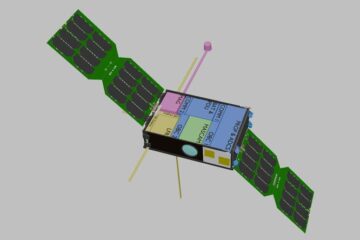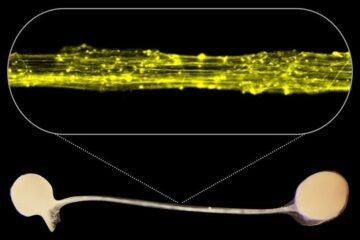Food Security: It Starts with Seed

With each passing year, the human population of our planet continues to expand.
This growth has created a wide ranging strain on our water and soil resources, as well as our environment, creating an unprecedented urgency to address the issue of food security. One way that scientists are working towards this goal is through the genetic modification of seeds, both as a method of improving crop yields as well as enhancing the nutritional composition of foods.
A new book published by American Society of Agronomy, the Crop Science Society of America and the Soil Science Society of America addresses the issue of seed modification for the improvement of food sources around the world.
The newly released book, Modification of Seed Composition to Promote Health and Nutrition, brings together research and interpretations from prominent scientists from around the world who are addressing many food-related human issues through modification of seed composition. Among the wide range of cutting-edge topics that this book covers are the pursuit of grains that could eradicate global malnutrition and the potential growth of vaccines.
This book provides valuable, science-based insights for researchers and practitioners in disciplines ranging from medicine to human nutrition to crop production. Readers from across a spectrum of various disciplines should find a topic of interest in this text. Chapter titles include “Engineering Proteins for Improved Nutritional Value”; “Reducing Peanut Allergy Risks by Means of Genetic Modification”; “Engineering Seeds for the Production and Delivery of Oral Vaccines”; and “Engineering Plants to Produce Polyunsaturated Fatty Acids”.
Hari Krishnan, a research molecular biologist with the USDA-ARS and an Adjunct Professor of Plant Sciences at University of Missouri in Columbia, MO, is the editor of the book. Current areas of research in his lab include the genetic modification of soybean seed composition and improvement of biological nitrogen fixation in the model symbiosis between soybean and Sinorhizobium fredii USDA257.
The publishing of Modification of Seed Composition to Promote Health and Nutrition coincides with the initiation of the Biomedical, Health-Beneficial and Nutritionally Enhanced Plants division in the Crop Science Society of America. This division of CSSA focuses on plants as food or feed, as well as the development and evaluation of novel characteristics and compositional quality traits in crops that are important to the health, well being, and nutritional requirements of humans.
View the table of contents for Modification of Seed Composition to Promote Health and Nutrition at: https://portal.sciencesocieties.org/Downloads/pdf/B40723.pdf
Modification of Seed Composition to Promote Health and Nutrition can be purchased online through SSSA for $105, Item No. B40723 at: www.societystore.org, by phone at 608-268-4960, or by email: books@crops.org.
The Soil Science Society of America (SSSA) is a progressive, international scientific society that fosters the transfer of knowledge and practices to sustain global soils. Based in Madison, WI, and founded in 1936, SSSA is the professional home for 6,000+ members dedicated to advancing the field of soil science. It provides information about soils in relation to crop production, environmental quality, ecosystem sustainability, bioremediation, waste management, recycling, and wise land use.
SSSA supports its members by providing quality research-based publications, educational programs, certifications, and science policy initiatives via a Washington, DC, office. For more information, visit www.soils.org.
SSSA is the founding sponsor of an approximately 5,000-square foot exhibition, Dig It! The Secrets of Soil, which opened on July 19, 2008 at the Smithsonian's Natural History Museum in Washington, DC.
Media Contact
More Information:
http://www.crops.orgAll latest news from the category: Agricultural and Forestry Science
Newest articles

Caution, hot surface!
An international research team from the University of Jena and the Helmholtz Institute Jena are demystifying the mechanisms by which high-intensity laser pulses produce plasma on the surface of solids….

Exploring the Asteroid Apophis With Small Satellites
In five years’ time, a large asteroid will fly very close to Earth – a unique opportunity to study it. Concepts for a national German small satellite mission are being…

First model of the brain’s information highways developed
Our human brain is not only bigger and contains more neurons than the brains of other species, but it is also connected in a special pattern: Thick bundles of neurons…





















